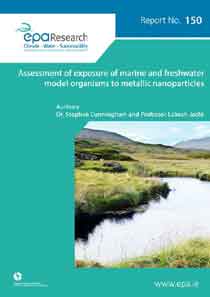Summary: With the advent of industrial utilisation of ENMs, it is now of the utmost importance that exposure risk scenarios in relation to increasing and unnatural NPs, where their function and interaction with their environment is unpredictable, are monitored, assessed and, if required, that regulatory guidelines are implemented early in their application.

Silver nanoparticles (AgNPs) continue to be utilised in a wide range of everyday products due to their unique physicochemical attributes, extending from silver’s historical use in medicinal and industrial applications. Silver, as a bulk chemical, is well understood and characterised, its exposure risk known and its toxicity determined. However, there are new and unknown risks associated with materials which have been synthesised or manufactured as engineered nanomaterials (ENMs), where individual particles have one angle measurement within the nanometre (nm) range. It is of importance to note that naturally-occurring particles within the nm range, i.e., nanoparticles (NPs), can and are created under natural conditions within the environment, such as by erosion. However, naturally-occurring NPs are typically slowreleased from their source at extremely low point concentrations and are typically inert, with low reactivity to their surrounding environment.
With the advent of industrial utilisation of ENMs, it is now of the utmost importance that exposure risk scenarios in relation to increasing and unnatural NPs, where their function and interaction with their environment is unpredictable, are monitored, assessed and, if required, that regulatory guidelines are implemented early in their application. Of all ENMs currently in use, AgNPs are contained in greater than 40% of listed ‘nano’-containing consumer products.
AgNPs lend themselves to broad applications, as detailed in Section 1, and present a credibility exposure risk and a suitable model for risk assessment of exposure. Within this project, assessment of exposure to metallic NPs, focussing on AgNPs on marine and freshwater model organisms, has been taken. Standardised toxicity systems and protocols are utilised, highlighting areas of concern or adaption for utilisation as NP assessment protocols. A novel marine invertebrate system has also
been investigated as a potential alternative organism for animal testing.